Whenever I come across a new type of smart product that’s I’ve never encountered before, I perk up like a little child. Even though the hero device of this article is nothing new per se, it was interesting enough that I decided to get it for a review.
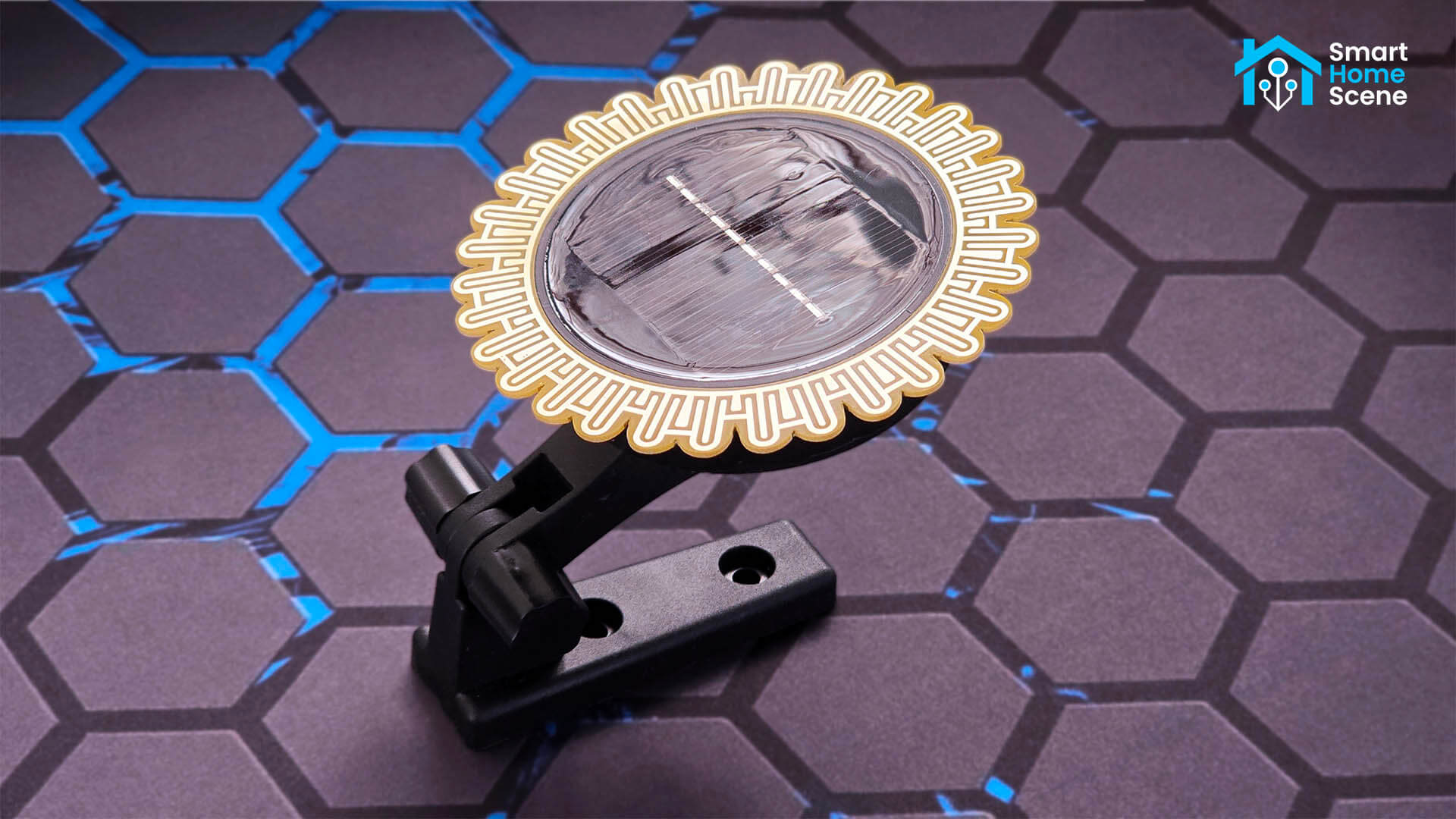
In this article, I’m testing and reviewing this new Tuya Zigbee Solar Rain Sensor, white labelled as model RB-SRAIN01 or sometimes WKD-LS100. I got it off AliExpress for less than $20 but it’s also available on some Amazon stores.
Technical Specification
- Model: Solar Rain Sensor RB-SRAIN01 / WKD-LS100
- Communication protocol: Zigbee 3.0
- Battery: Lithium 3.7V, 1300mAh
- Ingress rating: IPX6
- Operating temperature: -10 to 50°C
- Data sampling rate: 60sec
- Size: 104x104x21mm
- Price: $19.90 @ AliExpress
Teardown and Overview
This Tuya Solar Rain Sensor arrived in a box containing the device itself, a mounting bracket with some screws, a special sticker for installing the device on glass and a user manual. Everything was neatly packaged and wrapped in foil to prevent shipping damage.

The mounting bracket screws in place on the backside of the sensor. It can rotate and swivel up and down, useful for adjusting the proper angle and aiming the device towards the sun. The sticker is optional and needs to be used if you decide to mount the device on a glass window. It’s a very large and strong sticker that will no doubt hold this Tuya rain sensor in place.

The device looks like a sunflower, with the main induction plate going around the center. A small solar panel that recharges this rain sensor is installed in the middle. It’s powered by a 1300mAh lithium battery which should last for a very long time if the inside components are not compromised by moisture or water.

The backside of the sensor has some basic information printed along with a QR scanning code for the Tuya Smart Life app. The pairing button is placed at the bottom, marked with a small hand and an indicator LED. It’s not obvious at first, but you need to press the protective foil a bit stronger than usual in order to trigger it.

Opening up the device took a bit of pulling and I suspect I damaged the IPX6 protection rating of the sensor. I will have to fill it up with glue after I’m done. A small PCB is found inside, powered by the Tuya ZTU [Datasheet] communication module. There are no marking on the sensor whatsoever. The good thing is the lithium battery is easily user replaceable.

Home Assistant Integration
This sensor is not officially supported in Zigbee2MQTT or ZHA yet. However, I managed to create a fully working external converter for Z2M that operates great. To pair the sensor to the coordinator, press and hold the button for around 5 seconds until the LED starts blinking.
UPDATE 10.08.2024: Device now works with ZHA too! Apply this custom quirk.
Zigbee2MQTT
Out of the box, this sensor is detected as a water leak device in Zigbee2MQTT. It recycles a converter from a cabled water leak sensor that has nothing to do with this device. To get it in working order, I created an external converter and applied it in Zigbee2MQTT. Here’s how you can do that:
- Create a new file in the zigbee2mqtt directory (next to configuration.yaml)
- Name it
tuya_rain_sensor.js(make sure it ends with .js) - Open the file, copy the contents from bellow and save the file
- Open Zigbee2MQTT and navigate to Settings > External Converters
- Press the + button and type in
tuya_rain_sensor.js - Press Submit in the bottom left corner
- Press Restart in the top right corner
- Pair the Tuya Rain Sensor
- Done
const fz = require('zigbee-herdsman-converters/converters/fromZigbee');
const tz = require('zigbee-herdsman-converters/converters/toZigbee');
const exposes = require('zigbee-herdsman-converters/lib/exposes');
const tuya = require('zigbee-herdsman-converters/lib/tuya');
const e = exposes.presets;
const ea = exposes.access;
const definition = {
fingerprint: [
{
modelID: 'TS0207',
manufacturerName: '_TZ3210_tgvtvdoc',
},
],
model: 'TS0207_rain_sensor',
vendor: 'Tuya',
description: 'Solar Rain Sensor RB-SRAIN01',
fromZigbee: [tuya.fz.datapoints, fz.battery, fz.ias_water_leak_alarm_1],
toZigbee: [],
exposes: [
e.water_leak('raining').withDescription('Droplet Detection (Raining)'),
e.numeric('illuminance', ea.STATE).withUnit('mV').withDescription('Illuminance level'),
e.numeric('illuminance_average_20min', ea.STATE).withUnit('mV').withDescription('Illuminance average for the last 20 minutes'),
e.numeric('illuminance_maximum_today', ea.STATE).withUnit('mV').withDescription('Illuminance maximum for the last 24 hours'),
e.binary('cleaning_reminder', ea.STATE, 'ON', 'OFF').withDescription('Cleaning reminder'),
e.numeric('rain_intensity', ea.STATE).withUnit('mV').withDescription('Rainfall intensity'),
e.numeric('battery', ea.STATE).withUnit('%').withDescription('Battery level'),
e.battery_low(),
],
meta: {
tuyaDatapoints: [
[4, 'battery', tuya.valueConverter.batteryPercentage],
[101, 'illuminance', tuya.valueConverter.raw],
[102, 'illuminance_average_20min', tuya.valueConverter.raw],
[103, 'illuminance_maximum_today', tuya.valueConverter.raw],
[104, 'cleaning_reminder', tuya.valueConverter.trueFalse],
[105, 'rain_intensity', tuya.valueConverter.raw],
],
},
extend: [],
};
module.exports = definition;If the external converter was applied successfully, the rain sensor will be identified without a photo. It will have a model name of TS0207_rain_sensor with a manufacturer ID _TZ3210_tgvtvdoc. The description should be set to Solar Rain Sensor RB-SRAIN01. Here’s how it should look:

If you navigate to the exposes tab, you can see all the entities this device exposes in Home Assistant through Zigbee2MQTT and this external converter. The water leak sensor is a simple binary entity that changes state whenever the contacts of the device are connected.
It is very sensitive and operates correctly. It will immediately detect the slightest water drop on it’s surface, so it’s very usable in automations as is.

Now this is where things get interesting. Since this device uses exposed conductivity traces, when water falls on the sensor board, it bridges the gaps between these conductive traces, changing the resistance and producing a measurable voltage change. The value is reported in mV (millivolts) and has no use case as is, unless you are an expert in this field.
Creating template sensors
Even though this sensor is not meant to actually measure rainfall rate, I created a few template sensors based on the voltage reading that I believe are accurate enough to detect whether its raining lightly, moderately or heavily.
NOTE: The following calculations are based on assumptions and not facts. The sensor is not meant to measure rainfall rate. These template sensors are simply my shenanigans to convert the mV readings to text-based sensors usable in automations and dashboards.
Please do not rely on these values for anything other than fun automations.
I discovered that the mV (millivolt) reading changes non-linearly when water is introduced. With a single drop of water, it will immediately spike to 2000mV. Adding 4-5 more drops to the plate brings the value up to 2600mV. Completely submerging the sensor gives me a maximum reading of 3000-3100mV. It also has a base value of 5-7mV when dry that needs to be ignored.
With this information in mind, I created the following template sensor in an effort to differentiate between light, moderate and violent rain:
template:
- sensor:
- name: "Rain Rate"
state: >
{% set intensity = states('sensor.tuya_rain_sensor_rb_srain01_rain_intensity') | int %}
{% if intensity < 10 %}
No Rain
{% elif intensity <= 2000 %}
Light Rain
{% elif intensity <= 2600 %}
Moderate Rain
{% else %}
Violent Rain
{% endif %} Now, depending on the amount of water at the surface of the sensor it will change state accordingly:

Of course, this method is flawed in the way that even light rain will eventually wet the entire plate and you will get a violent rain reading. Because of this, I suspect in practice the values will have to be increased even more. Something like 3000 for moderate rain and above 3000 for violent rain might prove more truthful. I intend to test this theory when we do get actual rain in my area.
If you have any ideas how to handle this better, I’d love to hear them!
Summary
The Tuya Zigbee Rain Sensor RB-SRAIN01 is quite an interesting device. It can detect rain as soon as the first drop hits its plate and report it’s state back to the coordinator. It’s powered by a rechargeable lithium battery that can keep the device going as long as there is daily sunlight to recharge the battery. It’s also user replaceable without soldering and costs only a few dollars.
The build quality of the device itself is okay. It’s glued completely shut on all sides and I don’t think water is getting inside as long as you don’t submerge it completely. The ideal mounting location would be on a window or wall, so it stays off the ground.
If you are interested in adding this Zigbee Solar Rain Sensor to your smart home, here are a few links, including my seller (1st link).

![]()
AliExpress | AliExpress | AliExpress![]()
United Kingdom | Germany
Canada | Netherlands | France
*If links fail to open, try disabling your AdBlocker.
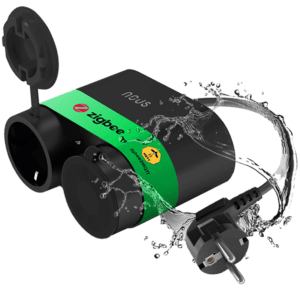
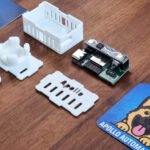
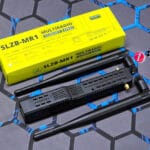
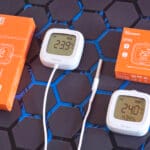
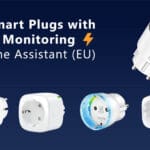
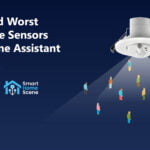
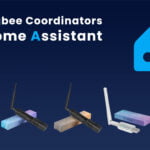
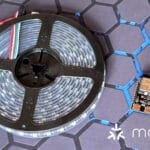
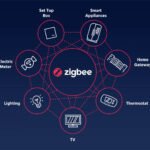
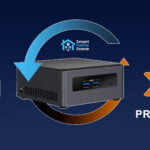
This is a brilliant write up. Thank you very much.
Do you think the device is good enough to detect just a few small rain drops (spitting rain) and be able to use this to know to run and get washing in? Or do you think washing would get wet before this detects enough rain?
Yes, even the slightest drop will trigger the sensor.
Even touching it with your hands will close the circuit and trigger it.
Great tutorial, thanks a lot!
I was a little bit to impatient though and paired with Z2MQTT befóre loading in the external converter. Now Z2MQTT keeps thinking it’s a water leak sensor… I already forced deletion multiple times, restarted Z2MQTT and even restarted HAss but unfortunately every time I pair it, it detects as water leak sensor.
Any idea how I can fix this?
The external converter is not applied correctly, you are doing something wrong.
Applying an external converter has priority of the default discovery of the device.
So, no matter what time you paired it, you can always apply the converter and it will work.
Force remove the device
Stop Z2M
Create the converter file
Add in Z2M (Settings > External Converters)
Start Z2M
Pair the device
same problem for me
Very nice write up, just ordered one using your affiliate link!
One suggestion, I would suggest to use the modern template sensor format for the rain intensity sensor instead of the legacy format.
I also added an availability template to avoid errors when the source sensor is not available, and a unique id so you can edit stuff like name, entity_id and icon in the GUI.
template:- sensor:
- unique_id: template_sensor_rain_rate
name: "Rainfall Category"
state: >
{% set rain = states('sensor.your_rain_sensor') | int %}
{% if rain < 10 %}
No Rain
{% elif rain <= 2000 %}
Light Rain
{% elif rain
{{ 'sensor.your_rain_sensor' | has_value }}
sorry, the comment section messed up the indentation. here’s a link:
https://dpaste.org/uByyZ
Hi, can you repost the right code, dpaste link is no longer working, thanks
https://smarthomescene.com/reviews/tuya-zigbee-solar-rain-sensor-rb-srain01-review/#creating-template-sensors
I totally forgot about that, and just typed it out in legacy.
Changed it, thanks for the hint!
Any smart way to get around that problem? (separate notification between condensation and rain)
No, as the plate is a simple binary contact
Will condensation/dew trigger the sensor?
Yes, I believe it will
Any long term / durability experience? Usually those conductors corrode very fast and render the devices useless after 6-12 month (based on location and average rain density). Unfortunately not very sustainable.
No, not really. I cannot make any claims for the durability, as I’ve only had it for about 1 month.
Seems is going to be natively integrated in Zigbee2MQTT soon
https://github.com/Koenkk/zigbee2mqtt/issues/23532
Yes, I added the image and converter
Hello,
did you already wrote in the Z2M community in order to ask to officially integrate the device?
Yes I did!
https://github.com/Koenkk/zigbee2mqtt/issues/23532
Hello David,
I have an issue with my battery reporting (same one from Facebook). I waited 24 hours as you suggested but it is still showing as Null. If I press the button on the back of the rain sensor it changes to N/A for a short time but then reverts to Null. Is there anything else I can do? Do I have a faulty sensor?
That’s weird, converter works 100%, I’m sure as I’ve tested in on two instances.
Battery reporting is flaky in Zigbee devices, but it should have pushed an update already.
Does the device works as it should, e.g. when you add water?
yes, it reacts either to touch or a drop of water. When I first added it to z2m I wasn’t using the converter, and I’m pretty sure it was reporting a battery percentage then. Unfortunately I now can’t work out how to remove the external converter to check. Deleting the file and removing the external converter from z2m has not done anything and it still shows as a rain sensor
1. Remove the device from Zigbee2MQTT (Force)
2. Stop Zigbee2MQTT
3. Remove the
.jsconverter file from your directory4. Edit Zigbee2MQTT’s
configuration.yamlfile and removeexternal_convertersalong with everything bellow it5. Start Zigbee2MQTT
6. Re-pair the device.
Let me know how it goes.
Please, would You be so kind and help how to create the template? I still get errors…
btw without converter there is still very limited info (tested right now)
what do you mean exactly, create the template?
so after getting the battery to report without using the external converter, I have added the external converter and I’m back to getting Null again. Is there anything what you can think of to try?
Try this and let me know how it goes:
https://pastebin.com/LggRkRVs
I have problem -. when I follow Your guide (With this information in mind, I created the following template sensor in an effort to differentiate between light, moderate and violent rain:) – i still get errors. So I have no idea now – is converter needed? Because in my case I need it, otherwise I see only water leak senasor. So how to place the template in configuration.yaml to make it work? I am sorry, I wish I have Your skills 🙁
Just paste the template code in Home Assistant’s configuration.yaml file and change your entity name.
Save, reboot Home Assistant.
I really try
Logger: homeassistant.config
Source: config.py:592
First occurred: 8:33:10 PM (1 occurrences)
Last logged: 8:33:10 PM
Invalid config for ‘template’ at configuration.yaml, line 49: invalid template (TemplateSyntaxError: expected token ‘end of statement block’, got ‘rain’) for dictionary value ‘sensor->0->state’, got “{% set rain = states(‘sensor.rain_sensor_rain_intensity’) | int %} {% if rain < 10 %}\n No Rain\n{% elif rain <= 2000 %}\n Light Rain\n{% elif states rain <= 2600 %}\n Moderate Rain\n{% else %}\n Violent Rain\n{% endif %}\n"
You have a syntax error. Specifically, it indicates that the template parser expected the end of a statement block but instead encountered an invalid token (rain).
You are pasting wrong!
I took a screenshot of how it needs to look when correctly set in configuration.yaml.
https://imgur.com/a/GW3auxP
Done – beer on You
Remark – how do I get it to show battery level? All I have is red “%”
Thank you, that worked!
I recalled correctly and the battery % is now reported:
info 2024-08-21 18:15:25z2m:mqtt: MQTT publish: topic ‘zigbee2mqtt/Water_Leak_Detector_TZ3210_tgvtvdoc’, payload ‘{“battery”:93,”battery_low”:false,”linkquality”:94,”tamper”:false,”water_leak”:false}’
Confusing!
hi, thank you very much for the work you are doing for your blog, I wanted to tell you that I am also experiencing the battery problem, I also updated the converter what you posted above but it always gives me null % what should I do?
https://ibb.co/hdnMcK1
Try this, it fixes battery reporting:
https://pastebin.com/LggRkRVs
Hi David, unfortunately this still does not work for me. This is what I see when I generate an external definition from the dev console (before applying any external definitions):
const {battery, iasZoneAlarm, commandsOnOff} = require(‘zigbee-herdsman-converters/lib/modernExtend’);
const definition = {
zigbeeModel: [‘TS0207’],
model: ‘TS0207’,
vendor: ‘_TZ3210_tgvtvdoc’,
description: ‘Automatically generated definition’,
extend: [battery(), iasZoneAlarm({“zoneType”:”generic”,”zoneAttributes”:[“alarm_1″,”alarm_2″,”tamper”,”battery_low”]}), commandsOnOff()],
meta: {},
};
module.exports = definition;
is this any different to yours? I have a semi working device with battery reports but I have a lot to learn before I would have a fully working one
Hi SHS, I have the same problem here where the battery is reporting as null even after removing the device and adding it again using the new converter you shared, any idea why this could be happening to some of us? maybe there are devices from different manufacturers or with different firmware being sold as the same device?
This is the message I see in MQTT Explorer:
{
“battery”: null,
“battery_low”: false,
“cleaning_reminder”: null,
“illuminance”: 66,
“illuminance_average_20min”: 63,
“illuminance_maximum_today”: 5849,
“last_seen”: “2024-08-26T20:33:46.918Z”,
“linkquality”: 47,
“rain_intensity”: 44,
“tamper”: false,
“water_leak”: false
}
Yes, I’m starting to believe it might be so.
Converter is correct and battery reports for me, so it’s a possibility.
Is there anything we can do to help fix this issue? I can sniff zigbee traffic in my network while the device is paired and share the extracted data if that would help
Hello,
I tried pairing it with my Zigbee2mqtt instance (
1.39.1 commit: e132316)
The device is discovered as a ts0207_water_leak_detector
https://www.zigbee2mqtt.io/devices/TS0207_water_leak_detector.html
using the js file you provided.
I also removed it and got it discovered again (did it twice) but I always got the same issue.
I think I will have to wait the next z2m release.
Good day! All such rain sensors had the issue that, over time, the contacts oxidized significantly. Does this problem exist here? Also, what type of battery is installed, and can it withstand negative temperatures? It is not clear where and how the light sensor is connected, as no wires to the cover are visible.
Hello,
Is there a way to reset the rain meter because at home, it does not recover to 0 if it no longer and nothing happens anymore?
thanks
Read this carefully:
https://smarthomescene.com/reviews/tuya-zigbee-solar-rain-sensor-rb-srain01-review/#creating-template-sensors
The sensor has a base value of 5-7mV
I managed to solve the battery problem, basically you have to delete the custom template and forcefully delete the associated device, then reconnect the device and it will be seen as a flood sensor with the battery percentage, now just reinsert the custom template, the last one shared, and everything should work! It has been reporting the battery status correctly for two days
Would like to add my bit of experience with this battery issue. Immediately after receiving my rain sensor and connecting it to my zb2mqtt, followed by adding the external converter from this article, everything worked perfect for a few days, including the battery %.
Then one day it decided to route through another device instead of the device that I permitted to join to during my original pairing process. It then started to drop off the network. I noticed this because when i tried to repair my rain sensor after it stopped reporting sensor values, zb2mqtt says the interview was successful but the rain sensor still did not update any of its sensors (I was lazy and just press the permit join(all)).
After selecting back the original device that I used, it started working again. Only that now the battery % is now the dreaded Null% instead of reporting a proper percentage like it did before this.
Its either this rain sensor itself is picky with what it route its network to (possible because I couldn’t pair it with my coordinator directly when attempting to troubleshoot the above problem) or it doesn’t like being routed through certain devices. In this case would be a sonoff zigbee smart plug.
HA returns an error with this code
template:
– sensor:
– unique_id: template_sensor_rain_rate
name: “Rain Rate”
state: >
{% set rain = states(‘sensor.tuya_rain_sensor_rb_srain01_rain_intensity’) | int %}
{% if rain < 10 %}
No Rain
{% elif rain <= 2000 %}
Light Rain
{% elif states rain 0->state’, got “{% set rain = states(‘sensor.tuya_rain_sensor_rb_srain01_rain_intensity’) | int %} {% if rain < 10 %}\n No Rain\n{% elif rain <= 2000 %}\n Light Rain\n{% elif states rain <= 2600 %}\n Moderate Rain\n{% else %}\n Violent Rain\n{% endif %}\n"
You an indentation/syntax error.
Copy paste properly.
Many thanks for the converter!
What a strange device.
When I first started to use it, the battery reports were NULLs, and it soon stopped reporting.
Thanks to Davide for spotting to first use the inbuilt (wrong) template, then the external one.
Now my battery reports are working correctly.
Also thanks to Riri0 for the tip about (not) changing routers.
The last weeks humidity overnight is over 90%. The rain sensor keeps reporting rain due to high voltage between 1000 and 3000 mV. The sensor is already placed at a steep angle but no succes … A pity. The only resolution I see to this issue is to read actual weather and humidity and maybe setup some logic with a bayesian sensor.
Official support for Z2M has been added at 1.40.0.
Battery reporting now works for me but I have lost “Water Leak” detection.
Is this the same for anyone else?
Water leak should be there. A PR has been raised
https://github.com/Koenkk/zigbee-herdsman-converters/pull/7931
Just received this sensor. I can’t get it to pair.
Did you press the hand icon or the red dot?
And should there be a LED when pressing the button?
I don’t have anything showing up on my zigbee network and no led. Did you have to charge it first in the sun?
You need to hold the button until the LED starts blinking.
Its quite possible the battery is depleted, so leave it in the sun for a while before pairing.
Hi !
Thanks for the tutorial ! This is awesomely detailed !
But I would like to see if anyone encountered my problem which is no illuminance detected at all. It remains at 0 mV.
No problem for leak detection or battery level either.
Bud
Does anyone know how the cleaning reminder works?
Mine has now gone to true, so I’ve cleaned the front but it’s still true!
I was wondering the same – my sensor just arrived and has the value already set to true
Hi all, great article. The question I have after owning this sensor for 3 weeks it has only rained twice. The first time seemed to work fine but the second time it seems that although it detects rain starting water remains on the surface for a while after the rain stops. This is despite being at quite a steep angle, more than 45 degrees. I first used coconut oil to see if that would make a difference then I used washing up liquid to remove the oil. Does anyone have any ideas to make the surface repel the water more. Thanks
I have the same problem, does anyone know what’s wrong? It rains, and it takes a long time to notify that it’s no longer raining
Nothing is wrong, that’s just how this sensor works. The real pro rain sensors have a heater inside for this reason, but that’s not possible for a battery powered device like this one.
It could work with a water-repellent spray. In other words, an impregnating spray. Anything where water rolls off more easily and the surface tension is reduced. Maybe try lotus spray or an anti-rain spray for the windshield. You have to check if these sprays have conductivity when they are dry.
Great write up on a cool smart device. I do however have one issue with the device that I haven’t found any good tips on. The one I got delivered seems to have pool range at best. I can pair it with my zigbee2mqtt if the device and Z2M is in the same room but if I go outside I loose connectivity. Meshing doesn’t seem to work either.
Try pairing it directly to a router, that would enable a good path to the coordinator. Something like a smart plug in between or something
Good day! All such rain sensors had the issue that, over time, the contacts oxidized significantly. Does this problem exist here? Also, what type of battery is installed, and can it withstand negative temperatures? It is not clear where and how the light sensor is connected, as no wires to the cover are visible.
The battery can withstand negative temperatures up to -10°C.
I’m not sure about oxidation, as I haven’t had the device that long.
Hi and thanks for this wonderful article
I’m also having the battery issue, but I’ve installed just few hours ago, so I will wait at least one day.
Is there a way to convert the illuminance mV in lux or lumen ?
Thanks
After using this product for roughly a month, I would like to 100% not recommend it to anyone. Even with a pretty robust zigbee network imho, this is the first device I have owned that refuses to reconnect to the network once it drops off. I will notice it only a few hours or maybe even the next day, then I am forced to climb up there and reset it to make it join the network. The funny thing is, when I reset it, zb2mqtt does detect it leaving the network. And no, pressing the button or triggering the sensor yourself doesn’t magically reconnect it back, a reset is the only option.
I would like to suggest smarthomescene to do a more thorough review of a devices reliability. All because the device is based on the same chip/platform that has worked well for many devices before this doesn’t mean it is as reliable as those previous product.
Hello,
I still have this rain sensor deployed. It has not caused any connectivity issues for me.
Since it’s far from my coordinator (SMLight SLZB-06M), I have it paired through a router plug (Tuya TS011F_plug_3) and it works without connection drops.
I don’t assume anything when I’m testing smart devices, especially those from the Tuya ecosystem.
I spent several days tinkering with the device and trying to get the template sensors to make sense before writing my article.
Are you certain the battery is fully charged? I would not trust the reported battery level in Zigbee2MQTT.
Is the unique manufacturer identifier the same (_TZ3210_tgvtvdoc)?
I am sorry but I am with SHS on this one, and just because you are having some issues with connectivity doesn´t mean everyone else is having those issues. I’ve had this device connected to my zigbee network for almost a month now and only had one connectivity issue at the very beginning when I placed it too far away from the nearest router so it dropped the network after some hours. After placing the device closer to a router it has not dropped the network even once for the last three weeks.
All such rain sensors had the issue that, over time, the sensor oxidized significantly. Does this problem exist here?
I agree. My Zigbee network has more than 50 devices, yet this one consistently drops offline and then rejoins without my intervention. It’s quite odd.
Check! I have the same experience with this device! Strong zigbee network but nothing but connection problems with this device!! Only hard reset (remove battery) will hard reset device and let it rejoin!
I have zigbee2mqtt on proxmox. where do i place the external converter file then?
The directory should be
/opt/zigbee2mqttCreate a new empty file with nano or similar and paste the contents.
Reboot the LXC
Hello @SHS,
I would like to thank you for your article here! I’ve found something new to play with again 🙂
The device is stuck to a smooth surface on my balcony, about 2 metres away from the nearest router (a Plug TS011F). Pairing was unproblematic, the signal strength is very good with an LQI of 120. Nothing is displayed on the battery yet, let’s wait and see, it often takes up to 24 hours for something real to appear. In Z2M under Status I see the ‘cleaning reminder’ as true, in HA it is displayed as unknown.
The rain stopped half an hour ago, but is still displayed at over 3000 mV. Logical, the drops are still there.
In any case, the start of the rain is signalled very reliably, the device is perfect for this! That’s all I need for my automations.
Really interesting. Are you useng the binary humidity sensor or any mV threshold for defining your automations?
I’ve been using this device as a way to get an automation to fold my awnings when it starts raining but only using the binary sensor (which in any case will only be triggered when its time to send a new update every 30s)…
I installed the sensor without problems and it recognized it without applying the translator. Strange things happen to me, i.e. I see the battery status, it disconnects and then reconnects without updating the values, it goes into turned off state, what could it depend on? do you have any ideas?
hello Guys,
I’ve had the sensor active for a few days. But he loses the connection every 10 hours.The next repeater is not 2m away. The LQI is 110. ideas?
Is the illuminance continuously measured even without any rain? Then it would be interesting for me, as this is a second helpful usecase to e.g. switch lights.
It is, although you would need to make template sensors to make sense of the mV values.
Thanks for the template which works well. I have tweaked the settings a little as I find the morning dew in the UK made it think the sensor was raining and upped the value for violent rain a little:
{% if intensity < 700 %}
No Rain
{% elif intensity <= 2000 %}
Light Rain
{% elif intensity <= 3000 %}
Moderate Rain
{% else %}
Violent Rain
{% endif %}
Using these seems to match what I would expect and what I would say is Light/Moderate/Violent.
Would you mind updating this now that it is native to zigbee2mqtt?
Yes, thanks for the reminder.
I’ll do it first chance I get
Hello.
The humidity sensor (dry / wet) stops working, it is always on dry state. But the rain intensity sensor returns data (the value now is 3037 mV)
Can you help me?
Thanks a lot
I dont understand how that could be. Can you re-configure the device in Z2M? Yellow button in the bottom right corner
Thanks! I only pressed the button and problem solved
Hello, I configured the rain sensor in home assistant with zha (without downloading custom quirks), but it doesn’t work 🙁
Anyone knows how to fix it?
As the article says – use the custom quirk. Have mine in the system already
Hi,
I buy solar rain sensor and I want to connect with tahoma Switch by somfy.
The wizard for connect new device on tahoma require a QR CODE DEVICE: where is it?
not found on device or package.
You can help me?
There’s no QR codes for Zigbee devices.
Hi!
Thanks for this great review!
I got one of those sensors, but something strange happens when I try to add it in HA with Z2M: the sensor only shows “movement” and “opening” as entities… but nothing related to rain or even water.
I installed and removed over 5 times.
I even bought a second one.
Also tried with the converter.
Nothing changes, it always sets up the same.
Any clue why this is happening? And how to fix?
Most likely, the converter is not applying properly.
You need to stop Zigbee2MQTT completely before the file can be added in Z2M’s configuration file.
Can you also paste the Zigbee Manufacturer ID from Z2M, so I can verify it’s the same device?
The device is named “_TZ3210_tgvtvdoc TS0207” (is this what you call Manufacturer ID?).
I’m going to try again with the converter.
(I’m quite new with HA, so maybe not completely familiar with all terms and actions…)
Hey,
I just checked: you no longer need the external converter.
You need to update Zigbee2MQTT to the latest versions and just re-pair the device.
It’s already fully supported:
https://www.zigbee2mqtt.io/devices/RB-SRAIN01.html#tuya-rb-srain01
Your ID is correct.
Yes, I did check that everything was up-to-date.
I also found the link you mentioned, that informs about device support.
But… everything keeps going on the same: when I pair it I only see the following icons:
– battery level
– device software
– movement
– opening
Maybe the device itself has something wrong.
I should perhaps try to buy another one from Aliexpress and check again… but already did that, too.
I will try to get another one, maybe from another vendor… hoping to finally manage to have a proper one!
Thanks for your support
Hi,
I ordered 3 new devices, from different shops (who knows…).
All 3 are the exact same product.
Tried to pair them… and all lead to the same conclusion: not even rain detectors, only “movement” and “opening”…
(also tried to uninstall and reinstall Z2M).
I’m quite new with HA, could this be because of my hardware/software setting ?
This process has been working though for other components like zigbee plugs or window opening sensors…
Hey,
Please stop ordering devices. This is not a device issue, it’s an issue with your setup. The device ID is CORRECT.
You are either loading the external converter wrong or you have generated an external definition by mistake or somehow Z2M’s library is not getting pulled.
Once you have an external converter loaded, the library gets bypassed, resulting in you always seeing the wrong “opening” and “movement” clusters.
Remove the device from Zigbee2MQTT.
Stop Zigbee2MQTT.
Open Zigbee2MQTT’s configuration folder with a file editor, remove ANY .js files from this folder EXCEPT state.json and coordinator_backup.json.
Remove any reference to an external converter from the configuration.yaml file.
Start Zigbee2MQTT.
Pair the device WITHOUT any converters.
If it does not work, repeat the process only this time applying the external converter manually as highlighted in the review.
Let me know how it goes.
Well… stupid me, the problem was once again between chair and keyboard…
I’ve followed you advices 3 times, without a change.
After googling for other clues I have found out… that I did not pair the device with Z2M, but just clicking the “add device” button on HA.
And of course, it works fine when using Z2M…
Now that the device is properly paired and I can see all exposes, I will try to use it properly :oD
Thank you for your support!
Has anyone had the issue with this device losing connection and not being able to reconnect it? I had to change the channel on my zigbee network because of a couple of devices kept dropping out. This one was sometimes intermittent. Since changing the channel, I have been unable to reconnect it to the coordinator (sonoff dongle-E with z2m). I’ve tried re-pairing the device (holding the button until the LED flashes), but it’s never recognised in z2m. The LED flashes briefly if you press the button momentarily, and flashes regularly when held down for 5 seconds.
I tried deleting any reference to it in z2m and starting again from scratch, but it stubbornly refuses to pair. Is there any other process I might have missed to reset it?
Even with the latest version of z2m, HA, sonoff dongle and 2 of these rain detectors – Ive had no luck. I thought the 1st was defected and tried a 2nd months later.
They lose connection in less than 24 hours. When they are connected it works fine.
My suggestion to people is to look at how many people are complaining about connection loss. It seems common with this device and until there is a workaround / solution save your money.
It appears this is one of those devices that works for some people and doesn’t for others.
I’ve yet to find out what the reason is, as it seems there aren’t hardware variations of it (it’s the same).
Could be a non-standard Zigbee implementation or incompatibility with some coordinators. I’ll order another sample and examine it more.
I returned one of these which was refusing to pair and got a replacement. The replacement also has issues, although it pairs OK. The problem is that it doesn’t actually seem to send any data, despite ‘last seen’ being updated every minute and LQI being 190+. All the data fields show as ‘Null’ and haven’t changed.
I’ve tried it with it being recognised by Zigbee2MQTT and with the external definition above but it behaves the same with both. I don’t really know if there’s a way to debug if the problem is with Z2M or if it’s the device itself.
Given the problems people seem to be having with it, I can’t recommend it which is a shame as it doesn’t seem there are any equivalent devices about.
Since I found out how to pair it correctly with Z2M a few days ago, I paired 2 devices which worked perfectly during half a day.
But during last week-end, they suddenly stopped reporting illuminance.
I’ve installed 2 additional devices today, but all (4 in total) behave the same way:
– No exposes sent except:
– LQI
– rain detection seems to work (periodically checked by just putting a water drop on the sensors)
The same behavior on 4 devices makes me think that it might be a software issue… but in my own configuration, or related to Z2M?
Yes I have exactly the same symptoms:
Rain yes/no field works when you wet the sensor.
Battery percentage is indicated.
LQI is good, and device last seen time updates once per minute.
All other fields remain null (though the illuminance field did register a single value once when I first paired it, and has remained stuck at that value since).
Given you have the same on multiple devices it seems likely to be a software problem, but whether it’s a change to the firmware on the device, or something in Z2M which has broken it I don’t know.
OK I’ve been looking at Z2M debug logs and I think the device is sending packets as it should be. I’ve put a sample of the log here: https://pastebin.com/eQxzyqjW
I can see packets with dp 105, 104 and 101 in there. If I put water on the sensor, the value under dp 105, which should be rain intensity, changes from eg “data”:[0,0,0,15] when dry to “data”:[0,0,11,139] when wet.
So it would appear that the problem is in the translation in Z2M somewhere. Perhaps if he has time SHS could have a look and see if there is anything obvious amiss as he wrote the converter originally. I don’t know enough about how Z2M works to see where the problem is.
It looks like it was a bug in Z2M – the devs have already found and fixed it yesterday:
https://github.com/Koenkk/zigbee2mqtt/issues/26201
I’ve updated to the dev release and confirm that it is now reporting as expected.
The update of Z2M to 2.1.1-1 (released today) seems to have brought everything back to normal.
The issue had been reported https://github.com/Koenkk/zigbee2mqtt/issues/26124 … and fixed!
All my 4 devices now show all exposes, even battery level.
That’s great to hear!
I second Bob’s observation; installed yesterday a new version of Z2M, think just to early (2.1.0) to find out I gained battery, but lost my lux details, notice that some of my battery operated device can now pull the battery status but that can be introduced some time ago. With latest version (2.1.1) everything is back to normal except for the cleaning_reminder which remains null, who cares, initially it was ON for no reason, maybe this will take some to get back in operation.
Hope the steep Illuminance curve (and top off at 6000 lx) is now also a bit better.
I forget where, but in another forum someone found that this device _TZ3210_tgvtvdoc would lose connectivity if it switched routers in its network. There is another version that’s OK.
Thanks Caius, Bob, and Wouter for the Z2M update check!
My batter level is stuck at 93% all the time. Cloudy days now and I have to wait till midday till it comes back
bought one from Aliexpress, but was DOA. Also, the screw mount was borked. This happens so often with Tuya, I shouldn’t buy that brand anymore.
Hi!
In case it helps someone.
I too had unreliable connectivity, even directly connected to the coordinator, just a few meters away.
Moving from a Combee II to a more recent coordinator fixed it (SMLIGHT SLZB-07 in my case, with Zigbee2mqtt).
For me the device itself went kaput after 6 months. Ordered another one but longevity is definitely an issue.
Hi, very good article!
I have 3 devices:
– One has worked perfectly until I put it in a drawer and after that it was dead (putting it in sunlight did not help)
– One had connection issues. Can not pair when the green light is blinking.
– One had some connection issues in the beginning but when it dropped out I enabled pairing in zigbee2mqtt and then it reconnected by itself without touching the device. However now the Rain attribute is stuck to True with no rain and Rain intensity is 0 mv. Illuminance is still working. The cleaning reminder has also change to true. I do not know if this is a problem.
Is there a way to reset the device or do I have to open it and remove the battery in order to reset the Rain and Cleaning reminder?
You need to take a look at the path these devices are forming to your coordinator.
Examine the logs and check if the are sending any payloads when their state changes.
It seems the connection drops, for one reason or another.
As for a hard reset, yes, you might need to take out the battery (and make sure it’s not dead while at it).
Thanx, I will try to open one of them and check/replace the battery. The last one has been working for some months before this.
Any thought if the cleaning reminder actually do something or is it just information and if it is possible to reset it?
I use the device with the Smart Life app. But I’m also wondering what the point of this cleaning function is? Do you just have to wipe the sensor with a cloth or how is the cleaning function supposed to work?
I have set a notification as automation when the device needs to be cleaned. There’s nothing about this in the app yet. I thought maybe you have to do it manually. Or is it automatically displayed in the app at some point?
And thank you very much for this great work and the friendly community :o)
I recently purchased one of these rain sensors, it regularly dropped the connection to my zigbee gateway, sometimes a few hours, sometimes a few days. In discussion with the Vendor, they told me that there are many people with the same problem, and may have returned them. It seems hit or miss if the connection will be reliable, but for the majority its not.
I’ve had similar issues when I added it to my Zigbee network at first – after pairing the connection dropped within 24-48 hours and couldn’t reconnect after.
In the end I ended up decoupling the outdoor light bulb that’s right next to it from the Philips Hue hub (different network) and connected the bulb straight onto the HomeAssistant Zigbee network – after that paired the rain sensor again and the clouds have lifted every since ;-).
Has been going steady for a few months now.
I’m using this to open and close my awning, but have some strange behaviour with the illuminance values. On a bright and sunny day like today (clear sky, 32°C) it reports only 5100 lx, while sometimes on cloudy days it will report 5600 or higher. This behaviour is not consistent though. Is it possiblle that the sensor is sensitive to temperature, with high temperatures having a negative influence on the lux measurements?
They are using a solar panel for the iluminance value so definitely yes… I get the same values here in Spain, in really sunny days with max direct illumination it tops at 5300-5400lx during the whole day with a very steep curve when the sun begins rising. The value is almost in the max way before the sensor gets directly illuminated…
How long does it take to recover from rain back to dry?
I’ve installed the device and it rained once. During the rain, the reading peaked at 3100, but even after several hours it’s still at 2770 – only dropping very slowly. The values do change, so the connection is fine, but this sluggish recovery makes it essentially useless.
It’s mounted at 45°, and I understand that without a heating element it takes time to clear – yet at this rate it is going to be wet 24/7 in the British weather.
Is the solar power sufficient to operate the sensor from May to October or what are your experiences?